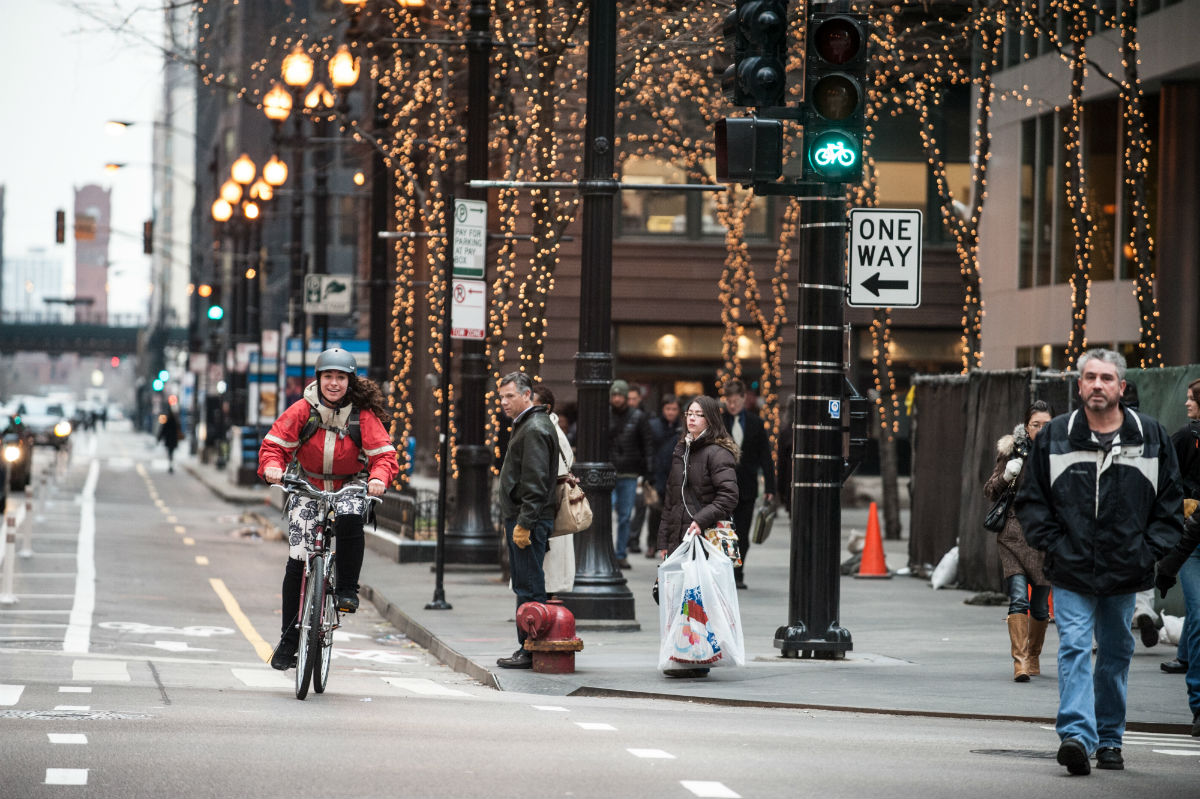PlacesForBikes is a PeopleForBikes program to help U.S. communities build better biking, faster. You can follow them on LinkedIn, Twitter or Facebook or sign up for their weekly news digest about building all-ages biking networks.
If you live in an important, underrated, but perhaps economically beleaguered U.S. city, you've probably seen a local news website like Buffalo Rising: upbeat, opinionated, and really, really into its hometown.
Last week, Buffalo Rising founder Newell Nussbaumer also provided the perfect example of why constant improvements in the "best bike cities" help improve the lives of Americans everywhere.
It’s funny. Just as I was thinking about posting a link to an article in TheAtlantic.com about the benefits of the protected bike lane, Pedal Tour operator Phil Szal sent me a note saying that he had been doing some traveling to other cities, and he was amazed at how the protected bike lane had become a standard convenience.
“It’s time for Buffalo to get DEDICATED bike lanes in the city,” wrote Phil. “It’s embarrassing that ALL cool progressive cities have them everywhere… except us.”
It’s true. Buffalo is just beginning to jump on this bandwagon. Yes, there is a Bicycle Master Plan in place, but it’s not happening quick enough. ... Why the heck can’t we get Michigan Avenue as a cross-city bike corridor immediately? How long will we have to wait to get bike amenities on Delavan Avenue, from Main Street to Delaware Avenue?
This may or may not be heartening to Nussbaumer, Szal, and others fighting to improve Buffalo, but this is exactly the conversation that Portlanders were having (presumably by telephone) when they started agitating to widen the sidewalks across the Willamette River, triggering a bike boom in a decaying industrial city.
It's exactly the way Minneapolitans started dreaming about converting an old railroad bed to the Midtown Greenway, and the way New Yorkers started pushing, years before Janette Sadik-Khan ran the transportation department, for protected bike lanes along Prospect Park in Brooklyn.
It's even the way Amsterdammers gradually revitalized Jodenbreestraat, today one of that city's most bustling shopping districts.
Transit writer Jarrett Walker once wrote that when they admire a pleasant street or other public space in a city they visit, tourists should also see it in bygone political context: as "a battlefield memorial, recording a triumph that involved major pain and suffering."
Every time people in Austin, San Francisco, or Fort Collins win a struggle for better transportation, they're not the only ones who benefit. Their victories empower, inspire and inform people in San Antonio, Sacramento, and Colorado Springs, whose own successes will inspire others.
This is how good ideas spread. This is why every local battle matters.






